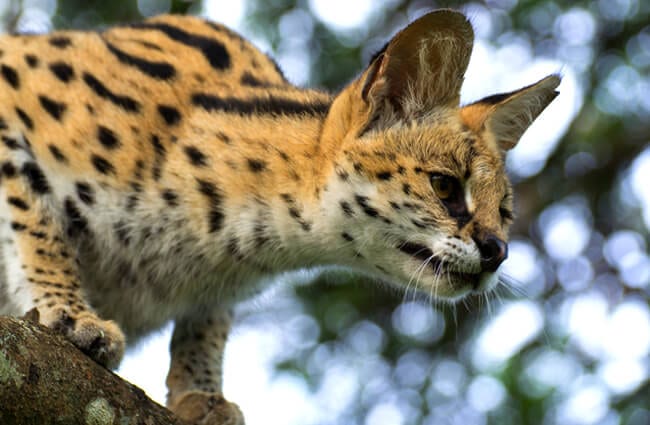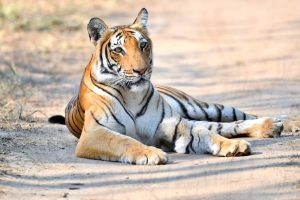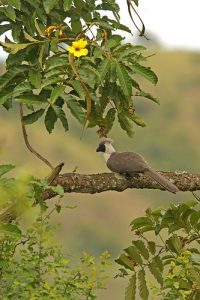- September 11, 2021
- Posted by: Love Uganda Safaris & Tours Ltd
- Categories: Blog, Latest News, People and community, Uganda safaris, Wildlife News

Welcome to the Uganda Wildlife Education Centre – the first stopover on a Uganda Safari
The Uganda Wildlife Education Centre (UWEC) is among Uganda’s homes to wildlife species. It is a perfect spot to see Uganda’s wildlife for visitors with limited time. In addition to viewing wildlife, the center offers educational opportunities for its visitors. Travelers from all corners of the world have got the privilege to stop over wildlife homes and have a glimpse of what is found in the wilderness of Uganda. It is a magic trick for tourists who might not have time to explore the country in the shortest time possible.
The Uganda Wildlife Education Centre is famous for offering relatively cheap tour packages compared to the expensive Uganda safari packages in the areas of the country. Actually, some tourists have testified that a visit to the zoo is more rewarding than one in a national park. This is because the former has some guaranteed views which is not the case with the latter. Remember, in national parks, tourists dive into the wilderness and search for wildlife unlike in a zoo where wildlife lies within the cages. While at the Uganda Wildlife Education Centre, travelers get an opportunity to draw as closer as they wish and get clearer views of wildlife unlike in the wilderness where a given distance between man and animals must be ensured.
About the Uganda Wildlife Education Centre (UWEC)
The conservation centre was established in the early 1950s, first, as a home for injured, orphaned, and wildlife confiscated from poachers. It was formerly known as the Entebbe Zoo and was established by the colonial government together with the Wildlife Conservation Society. This later graduated to the present-day conservation and education center for wild animals managed by the government of Uganda. However, the zoo operated at a less standardized level where travelers only came to see some African species and a few imported species. As time went by, the government of Uganda, donors, and International organizations showed more interest in this zoo. It is here that research was conducted and concluded that the Entebbe Zoo be renamed Uganda Wildlife Education Center (UWEC).
In 1994, more land was allocated to the Uganda Wildlife Education Centre which currently borders Lake Victoria – Africa’s largest freshwater lake. Through mass sensitization campaigns about nature and wildlife conservation, the Uganda Wildlife Education Centre has gained fame on both the local and international scene. It is one of the best African safari destinations from where travelers come to see lions, giraffes, buffaloes, elephants, Bengal tigers (only found here and in South Africa), jackals, snakes, Nile crocodiles, to mention but a few.
Among the conservation aims of the Centre include; treatment of injured, stressed, and sick animals to healing and recovery processes of the animals. The well-designed facilities at the center help in making wild animal quarantine processes easier. This Centre offers treatment to the infected wild animals without affecting or transferring infections to the animals or the communities.
Activities at the Uganda wildlife conservation center | Things to do at the Uganda Wildlife Education Center
The Uganda Wildlife Education Centre is famous for having quite a number of animal and bird species. This is in addition to its strategic location near Entebbe International Airport and Kampala Metropolitan area – Uganda’s capital city. Travelers find it easy to add this magical destination on their Uganda and Rwanda safaris. It is usually visited on arrival and departure days.
The Uganda Wildlife Education Center is small in size but never in experience, like any other safari activity in an African national park say a game drive, a tour at Entebbe Zoo takes approximately 3 hours. It is here that you get an opportunity to explore multiple animal and bird species that dwell in the African wildernesses. There are some wildlife species found ta the Uganda Wildlife Education Centre and can never be found elsewhere in Uganda and East Africa as a whole. A case in point is the Bengal tigers which were introduced to Uganda from South Africa. This was an exchange of one white male and one brown female were through the exchange for 25 monkeys with South Africa. The Entebbe zoo is also home to lizards, mountain gorillas, chimpanzees, the Nile crocodile, and multiple reptile species.
Travelers who visit this center enjoy extra services such camel riding, kids’ games, swimming at Lake Victoria and enjoying a lip-smirking lunch at the hotel therein.
Let us take you through the top things to do while at the Uganda Wildlife Education Centre | Entebbe Zoo.
Chimpanzee close-up experience
The chimpanzee integration experience is one of the exceptional adventures at the UWEC sector. This involves participating individuals having a close encounter with the chimpanzees at the sanctuary with the help of a keeper. The experience involves physical contact with the chimpanzees without any barrier. Here one gets to know their behaviors, history and challenges with the help of a keeper who will interpret the different gestures, sounds and vocals made by the chimpanzees.
The close-up experiences in the conservation center are available from Monday to Sunday starting at 7:30am. A short briefing session is a must for all. In the session, the zoo-keeper explains in detail what the activity entails.
The close-up experience costs $290 per person.
Behind the scene
This activity involves getting a close-encounter of how the wild animals in the center are taken care of. This includes their feeding processes, cleaning and many more. The activity takes about 2hours with the help of the zoo-keeper who guides through the whole process.
The activity time if from 9 to 12am for the morning-session and from 2:30 to 4:30pm for the evening-session. Rates are as below;
Non-Foreign Resident $70 and children $35
Foreign Residents– $50, children $15
East African residents pay 50,000ugx and 30,000ugx for the children
Exclusive VIP experience
For tourists that want to fully explore the Uganda wildlife conservation and education center, this activity is the best option. A personal guide is fully available for this experience, taking through the details of all the animals located at the center.
Rates are as below;
Non-Foreign Residents – adults $100 for adults and $50 for children.
Foreign Residents – adults $50 and $25 children.
East African citizen adults 35000ugx and 15000ugx children.
Forest trail
A forest walk is highly recommended for nature lovers. The most common trail here is 1km and walks through the small forest. Insight into a number of bird species, butterflies, mammals, and over 100 plant species can be experienced. The walk takes about 1.5 to 2 hours with a zoo-keeper guide in the lead.
Rates
Foreign Non-Residents Adults $15, children $5.
The Foreign Residents pay $10 and children $5.
Citizen residents pay 1000ugx and 5000ugx for the children.
Long-stay volunteer programs
These are suitable for the well-wishers of wildlife centers. Volunteers are involved in a series of activities. These include; animal food preparation, cleaning of holding facilities, animal observation, enclosures, and many more. Volunteering programs can be for a couple of days, however, it is advisable to take 5 days to exhaust all activities.
Wildlife at the Uganda Wildlife Education Center

Primates
UWEC is home to several primate species. These include; olive baboon monkeys, black-and-white Colobus monkeys, patas monkeys, red-tailed monkeys, Rwenzori white and black Colobus monkeys, and Chimpanzees. The center is surely one of the best places to see these primates from.
Cats
The recent introduction of Bengal tigers has diversified the cat list at the Uganda Wildlife Education Center. Other cats that live here are lions, serval cats, and leopards. Tigers are the largest cat species besides lions, leopards, and cheetahs. These can also be sighted while on your Uganda safari. Tigers are endangered cat species. They are threatened by poaching, habitat fragmentation, human-wildlife conflict, and habitat destruction.
In Uganda, we received the Bengal tiger specie that comes from the family of panther Tigris tigris. The Bengal tiger is the largest of all the other tiger species. The arrival of one white male and one brown female was through the exchange of 25 monkeys with South Africa.
The shipping of these tigers from South Africa by the Uganda wildlife conservation education Centre costed $2000. These tigers consume about 150,000 Uganda shillings of 10 kilograms of meat.
The tigers were introduced in Uganda for conservation roles of education, research, and recreation. The Uganda wildlife conservation education Centre aims more at the introduction of more mammals such as the Kangaroos, and the establishment of satellite zoos in the different regions of Uganda. It helps to boost the tourism industry in the pearl of Africa.
Ungulates
These are hoofed typically herbivorous quadruped mammals. The conservation area is home to some like reedbuck, impalas, hartebeest, giraffes, giant forest-hog, common Eland, Camel, bushbucks, African elephants, and African Buffaloes.
Reptiles
Reptile species at the Uganda Wildlife Center include the Nile crocodile, Gabon viper, marsh Terrapin, Egyptian cobra, and the African-rock Python.
Bird species

Uganda is known to have birds in every sect from the north to the south. The Centre is one of the places that harbor these birds. And it is said to be home to over 120 beautiful bird species. The most common ones include Giant Kingfisher, Peafowl, pink-backed Pelican, Ostrich, Grey-crowned crane, African fish eagle, African gray parrot, great blue-turaco, and many more.
How much is the entrance to UWEC? | How much is visiting a zoo in Uganda? | How much is the entry fee at Entebbe Zoo?
- The rates for Foreign Non-Residents Adults are $15 and for children $5.
- The Foreign Residents pay $10 and the children $5.
- Citizen residents pay 1000ugx and 5000ugx for the children.
Which other activities can I combine with a visit to the Uganda Wildlife Education Centre?
It does not have to be Entebbe Zoo alone during your Uganda safari. This is what makes Uganda stand out from other African safari destinations – easy-to-combine safari activities are here.
During your visit to the Uganda Wildlife Education Centre, you can choose to add these destinations;
Ssese islands
Located in Lake Victoria – Africa’s largest freshwater lake which covers Uganda, Kenya, and Tanzania, Ssese islands are Uganda’s best safari islands. Starting from the sand beaches, fresh waters, luxurious accommodation facilities, birding destinations, and sanctuaries. All these are found on the Ssese islands. After you have paid a visit to Uganda Wildlife Education Centre, you can spend the rest of the day at a hotel on any of these islands. Take part in the many safari activities which take place there. These include; birding, guided nature walks, sunbathing, swimming, fishing, canoeing, visiting the local fishing communities, quad biking, boat cruises, and beach games. All these are good to refresh someone who is heading to or coming from a long safari destination deep in the villages of Uganda.
Kampala city tours
Deep in the heart of East Africa lies a magical city named after an impala called Kampala. This is the major capital city of Uganda. Uganda is also known as the Pearl of Africa as per Winston Churchill’s popular book “My African Journey.”
Kampala is just an introduction to Uganda’s hidden treasures. Many people are obsessed with popular tourist attractions. These include Lake Victoria (Africa’s largest freshwater lake), River Nile (the world’s longest river), Murchison Falls (the world’s strongest waterfall), etc. But they do not pay attention to Kampala city. This is why they end up missing beautiful places. These include; the Kasubi tombs, Bahai temple, Namugongo Martyrs’ shrine, Makerere University. Kabaka’s lake (Africa’s largest man-made lake), local markets like Nakasero and Kalerwe markets. Old Kampala mosque, the Uganda museum, to mention but a few.
At the old Kampala mosque, you will enjoy spectacular views of the seven ancient hills of Kampala. These are; Mengo, Rubaga, Namirembe Hill, Makerere, Kololo, Nakasero, and old Kampala hills. The hills where first shops, administrative buildings, markets, and other major city buildings were first established.
In conclusion therefore, the Uganda Wildlife Education Centre is unique because of all the wildlife action that takes place there. And every day there are always plenty of exciting wildlife shows to see. We can organize a day visit to the Uganda Wildlife Education Centre.
Leave a Reply
You must be logged in to post a comment.
